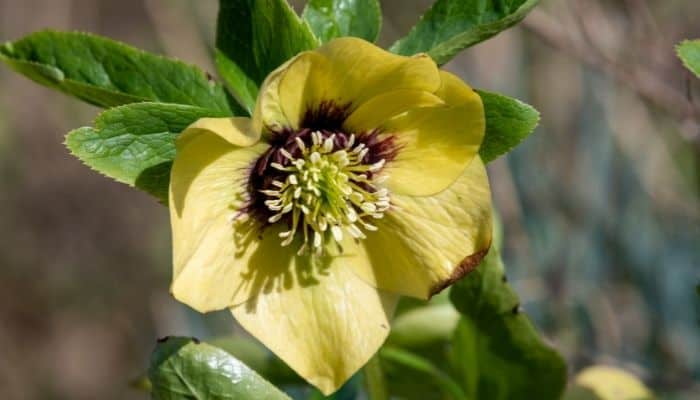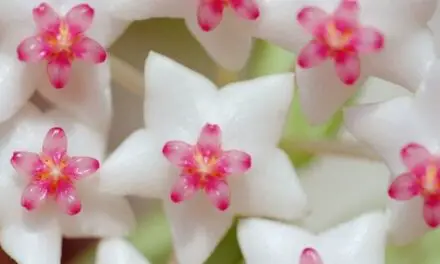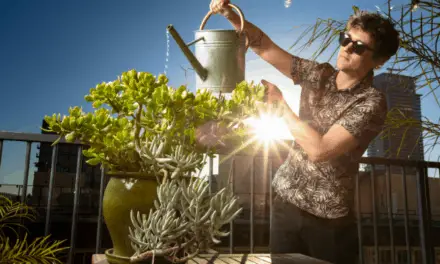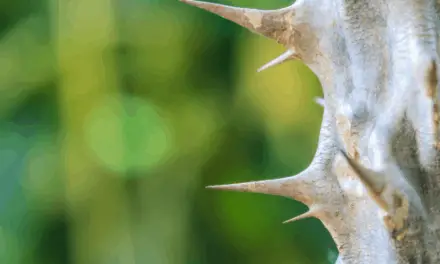Hellebores are easy to care for, cold-hardy plants that can even bloom when there’s snow on the ground.
Although they’re tough and winter-ready, you’ll still have to be fairly precise about a couple of elements of their care if you want these plants to grow well.
In this article, I’m going to go into detail about everything you need to do so that your hellebores will grow as fast and as healthy as possible.
Table of Contents
Why Are My Hellebores Not Growing?

Your hellebores are not growing because they are either not receiving the right amount of light or water, they are growing in unsuitable soil, not being pruned, not being fertilized, have been planted too deep, or their roots compete with other plants.
These plants are more at risk during their first season, so try to give them ideal growing conditions when they are young.
Once they become established they are far better at coping with drought, competition from other roots, and tougher growing conditions, in general.
These plants are also slow growers and can take up to three years to mature, so it may not be that your hellebores are not growing, they might just be growing more slowly than you are expecting.
They Are Not Receiving The Right Amount Of Light
If you don’t want your hellebores to stop growing, it’s important to give them the amount of light they like.
They can tolerate a wide range of lighting conditions but grow best when given a little direct morning sunlight and then partial shade in the afternoon.
Dense shade or exposure to direct afternoon sun may stunt your hellebore’s growth.
To Encourage optimum growth, plant them somewhere where they will get some direct morning sunlight and then bright indirect light after midday.
Related Article: How To Water Your Houseplants In Winter (So They’ll Thrive Come Spring)
They Are Not Being Watered Properly
Hellebores need plenty of water during their growing period, spring and fall.
They also need to be well watered during long dry spells and during their first season, before the roots are established.
The heat makes hellebores go dormant so you might have to water less during the summer.
Aim to keep their soil evenly moist but not soggy.
As the soil seems to be transitioning from slightly moist to dry – you can give some water.
They Are Planted In Unsuitable Soil
Your hellebores may also stop growing if they are planted in soil that they don’t like.
These plants grow best in slightly moist, well-draining soil that is a little on the alkaline side.
The soil should also be enriched with compost and lots of organic matter.
You can add some garden lime to your soil if it is too acidic for hellebores to grow well.
Mushroom compost contains chalk and is also good to raise pH if your soil is on the acidic side.
They Are Growing In Pots
Hellebores can quickly become unhappy when potted.
They have a deep root structure and may not grow at their best if kept in a shallow pot.
Hellebores also like to grow in cool soil.
When kept in pots, especially black plastic ones, their soil tends to heat more than they would like and this can impact how much they grow.
They also don’t like to be too root-bound, so if you see the pot bulging because roots are taking over, it’s time to repot your hellebores or plant it in your garden.
If you do grow them in pots, keep them out of the direct hot sun so that they don’t absorb heat and begin to warm the soil.
But, if you can, plant them in your yard where they’ll grow better and be a lot happier.
Their Roots Are In Competition With Other Trees Or Plants
It can be tempting to plant your hellebores beneath the foliage of a big tree that will shade it from the afternoon sun.
But if the ground where you plan to plant them has already been taken over by roots, they may not grow at all.
Before you plant them in the ground make sure they have space to thrive – check that there are no other plants too close by or tree roots growing near the surface of the soil.
They Are Not Being Pruned And Deadheaded
Hellebores are slow growing so they don’t require much regular maintenance.
But if you want them to grow faster, it’s important to prune them as you see new growth emerging, around late winter, early spring.
Cut back old raggedy leaves to the ground and leave behind only fresh, healthy-looking growth.
New growth will come up quickly and this will keep your hellebores growing fast and looking great all season.
Cut off all spent flowers before they set seed and the pods split.
Once flowers begin to wilt, remove flower stems back to the base of the plant.
If you don’t remove the spent flowers your plant will put much of its energy into reproducing instead of producing new growth.
They Are Planted Too Deep
Be sure not to plant your hellebores too deep in the ground as this can stunt their growth.
For best results, plant them so that the crown of the plant is just barely buried below the surface of the soil.
They Are Not Being Fertilized
If the soil has not been enriched with compost and organic matter, hellebores may require fertilizing to grow as well as they otherwise would.
Work a good organic fertilizer into the soil when you are planting your hellebores in spring or the beginning of fall.
After fertilizing, water well and apply a couple of inches of mulch.
Fertilize in spring and early fall to encourage your hellebores to grow.
Are Hellebores Slow Growing?
Yes, these are slow-growing plants and can take around 18 months to reach a height of about six to eight inches.
How Long Do Hellebores Take To Grow?
When grown from seed, hellebores can take two years or more to flower and up to three years to reach maturity.
Final Thoughts
If you find that your hellebores are not growing it is most likely a light or watering issue.
Check they are planted in rich, well-drained soil that is kept slightly moist.
For optimum growth, plant them in a location where they get a bit of direct morning sunlight and lots of bright indirect sunlight in the afternoon.




